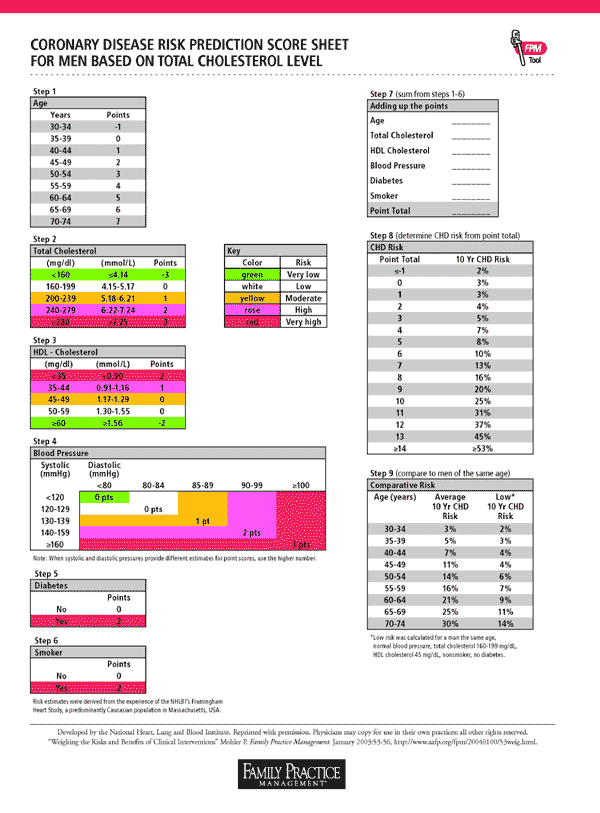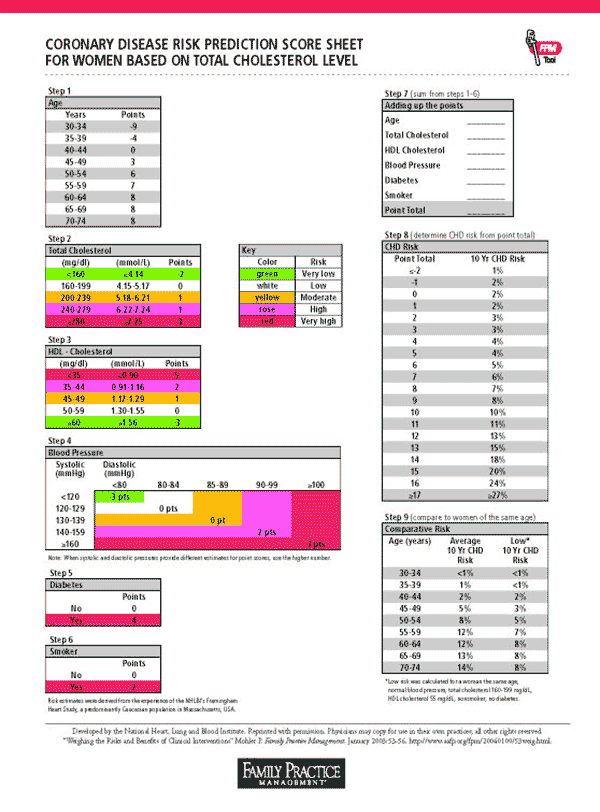
Fam Pract Manag. 2004;11(1):53-56
A 62-year-old male patient presents to your office for a routine checkup and asks whether he should be taking an aspirin a day to prevent heart attack. His wife apparently read this recommendation in a women’s magazine and asked him to seek your advice. The patient has no history of cardiovascular disease but does have mild hypertension. What would you recommend to him, and how would you arrive at your recommendation?
High-quality medical care requires a careful balance of risks and benefits, whether you’re helping a patient decide if he should take an aspirin a day to prevent cardiovascular (CV) events, undergo a prostate-specific antigen (PSA) screening or have a biopsy to examine a suspicious lump. To make the best decisions in these clinical situations, you must engage your patient in a cost-benefit discussion, taking current evidence and the patient’s needs, values and preferences into account. Using aspirin as the example, this article will walk you through the necessary steps.
1. Understand the evidence
Not since Hippocrates ground up willow bark and Friedrich Bayer’s employee Felix Hoffman tinkered with the salicylate molecule to create ASA to alleviate his father’s arthritis pain has aspirin enjoyed such notoriety. The beneficial effects of aspirin in secondary prevention of CV and cerebrovascular disease have been well established since the 1970s. Recently, the U.S. Preventive Services Task Force (USPSTF), usually a very conservative (“we’ll be the last to jump on the bandwagon”) organization, recommended that those patients without known cardiovascular disease but with at least a five-year 3-percent risk for a CV event be treated with 81mg of aspirin daily.1 The task force gave this intervention its highest rating, an “A,” meaning it is strongly recommended. The data suggest that aspirin reduces the risk of CV events by 28 percent.
(To view recommendations on other clinical topics, visit the USPSTF website. To access a comprehensive database of clinical guidelines, visit the National Guideline Clearinghouse, and to access systematic reviews of the evidence on a variety of clinical topics, visit the Cochrane Reviews website.)
ESTIMATES OF BENEFITS AND HARMS OF DAILY ASPIRIN USE OVER FIVE YEARS
The following estimates, from the U.S. Preventive Services Task Force,1 are based on a relative risk reduction of 28 percent for coronary heart disease events in aspirin-treated patients and assume that risk reductions do not vary significantly by age.
| Benefits and harms associated with daily aspirin use | Baseline risk for coronary heart disease over five years | ||
|---|---|---|---|
| 1 percent | 3 percent | 5 percent | |
| Total mortality | No effect | No effect | No effect |
| Coronary heart disease events | 1-4 avoided | 4-12 avoided | 6-20 avoided |
| Hemorrhagic strokes* | 0-2 caused | 0-2 caused | 0-2 caused |
| Major gastrointestinal bleeding events** | 2-4 caused | 2-4 caused | 2-4 caused |
2. Understand the risks and benefits
While daily aspirin use promises certain benefits, it is clearly not without risks, including hemorrhagic stroke and major gastrointestinal bleeding. Table 1 outlines the benefits and harms associated with daily aspirin use that were noted in the five studies that the USPSTF used to make its recommendation noted above.
But before you can understand a patient’s real risks and benefits of daily aspirin use, you must understand his or her risk of CV events. To do this, clinicians should become familiar with a coronary heart disease risk calculator such as the Framingham tool.2 There are paper versions (which can be viewed and downloaded below) and online tools. Most of the CV calculators create a 10-year risk, so the result needs to be divided by two. Risk calculators that include age, gender, total cholesterol, HDL, smoking and treated or untreated blood pressure are more accurate than simply counting risk factors. According to the score sheet on page 54, a 62-year-old man has at least a 4-percent, five-year risk of CV events, making our fictitious patient a candidate for daily aspirin use.


3. Understand your patient
To weigh the risks and benefits associated with an intervention, you need to do more than consult the evidence and risk calculators. You also need to talk with your patient and find out what his or her needs, concerns, values and preferences are. Some patients may fear a hemorrhagic stroke more than an MI and will elect not to take aspirin. Others may have absolute or relative contraindications that will preclude them from the standard treatment. Only you, their family physician, can help patients weigh these issues and arrive at an informed decision that takes into account both the scientific and human sides of medicine.
RISK CALCULATORS ON THE INTERNET
The following risk calculators, all available on the Internet, can help you and your patients assess their risk for a variety of clinical conditions and then use the information to formulate a shared care plan.
Breast cancer
Cancer (general)
Coronary heart disease
http://www.intmed.mcw.edu/clincalc/heartrisk.html
http://www.med-decisions.com/cvtool/index.html (also offers a version for the handheld computer)
Diabetes-related
http://www.dtu.ox.ac.uk/riskengine/download.html
http://www.healthandage.com/tools/diab/indexdiab.jsp
http://www.footandankle.com/DMfoot/start.html
Osteoporosis
http://www.indiadiets.com/calculators/risk_osteoporosis.htm
Prostate cancer
Smoking-related
Strep throat